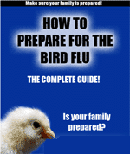Toxic Shock Syndrome
Many people incorrectly believe that TSS only affects women, when in fact it can affect anyone - men, women and children. TSS has occurred in all races, although most cases have been reported from North America and Europe.
What Is Toxic Shock Syndrome?
There are actually two different types of this condition. Toxic shock syndrome, which is caused by Staphylococcus aureus bacteria, has been associated with the use of tampons. (TSS was initially linked to a particular brand of tampons, which have since been taken off the market.) Although the exact connection is still not clear, researchers suspect that certain types of high-absorbency tampons provided a moist, warm home where the bacteria could thrive.
Although TSS usually occurs in menstruating women, it can affect anyone who has any type of staph infection, including pneumonia, abscess, skin or wound infection, a blood infection called septicemia, or a bone infection called Osteomyelitis.
A related infection, streptococcal toxic shock syndrome, or STSS, is caused by streptococcus bacteria. Most often STSS appears after streptococcus bacteria have invaded areas of injured skin, such as cuts and scrapes, surgical wounds, and even chickenpox blisters. It almost never follows a simple streptococcus throat infection
Symptoms
Toxic shock syndrome
Toxic shock syndrome from staphylococcus starts suddenly with vomiting, high fever (temperature at least 102 degrees Fahrenheit [38.8 degrees Celsius]), a rapid drop in blood pressure (with lightheadedness or fainting), watery diarrhea, headache, sore throat, and muscle aches. Within 24 hours, a sunburn-like rash appears. There also may be bloodshot eyes and an unusual redness under the eyelids or inside the mouth (and vagina in females). After that, broken blood vessels may appear on the skin. Other symptoms may include: confusion or other mental changes; decreased urination; fatigue and weakness; thirst; weak and rapid pulse; pale, cool, moist skin; and rapid breathing.
Streptococcal toxic shock syndrome (STSS)
Streptococcal toxic shock syndrome can happen following a streptococcus infection in the body, most often a skin infection or an infected wound. Within 48 hours of infection, the person's blood pressure drops dangerously low, and he or she may have fever, dizziness, confusion, difficulty breathing, and a weak and rapid pulse. The skin may be pale, cool, and moist, and there may be a blotchy rash that sometimes peels. The area around an infected wound can become swollen, red, and have areas of severely damaged or dying flesh. The liver and kidneys may begin to fail, and bleeding problems may develop.
If you develop toxic shock syndrome, you'll likely be hospitalized and need antibiotics. Doctors will try to determine the source of the infection. Along with antibiotics, you'll receive supportive care to treat the signs and symptoms of toxic shock syndrome. If your blood pressure begins to drop (hypotension), you'll need medication to stabilize it and fluids to prevent dehydration. The toxins produced by the staph bacteria may result in kidney failure. If your kidneys fail, you may need dialysis.
About the Author:
Can Toxic Shock Syndrome Be Prevented? Find out at http://ToxicShockSyndrome.ewhy.info
Read more articles by: Darry J.Oswald
| 